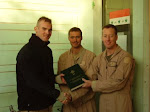
“Let’s not mince words,” Kwasniewski wrote at one point on Facebook. “This is a declaration of total war.”
Francis’s decision, perhaps like no other in his eight-year papacy, has struck at the perilous fault line in the Catholic Church, where progressives and traditionalists are divided not only ideologically but also over how they pray. While the vast majority of Catholics attend the modern Mass — devised in the 1960s and celebrated in the local language — a small but devout group of traditionalists prefer the old rite, a ceremony conducted in Latin that dates back more than a millennium, and that has increasingly become a conservative emblem of protest.
Francis, saying he was acting for the “unity” of the church, made clear he felt like the old rite was being weaponized. He said freedoms to celebrate the old Latin Mass granted by his predecessors had encouraged “disagreements that injure the Church, block her path, and expose her to the peril of division.”
His mid-July decree dramatically tightened the rules on who can celebrate the old Latin Mass, requiring, among other things, new permission from local bishops. Some of the pope’s allies say the goal is to curtail forces antagonistic not specifically toward Francis’s pontificate, but toward Catholicism’s sometimes-lurching effort since the Second Vatican Council to modernize and reform.
But within the U.S. church — a global epicenter for the traditionalist movement — the pope’s decree has only deepened the opposition, expanding it to include fundamental questions about worship and what it means to be a good Catholic. Those loyal to the Latin Mass say they are simply praying the way hundreds of past popes have worshiped, the way saints have worshiped, the way their own grandparents worshiped — using a ceremony they find beautiful, rich, unblemished.
The pushback to Francis’s decision has been intense. Archbishop Carlo Maria Viganò, a former Vatican ambassador to the United States who has become this era’s highest-profile papal critic, went so far as to call Francis a “non-Catholic pope.” Traditionalist Cardinal Raymond Burke, on his personal website, offered a 19-point critique of the decision. Many conservative-leaning U.S. bishops have simply allowed the Latin Masses to continue, and one, Bishop Thomas Paprocki of Springfield, Ill., shared the text of his dispensation on a canon law listserv so other prelates could follow suit.
Read the rest: https://www.washingtonpost.com/world/2021/09/17/latin-mass-pope-francis/













No comments:
Post a Comment